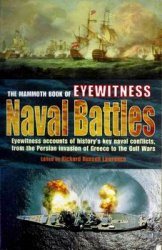The Canadian economy was gradually merged with that ol the
United States, while the American economy shadowed forth
unlimited potential. According to Roosevelt's plan, America
became the 'arsenal of democracy'. But in 1939 she was still
feeling the effects of the Great Depression of the i93o's. There
were seven million unemployed and her preparation for war
was feeble. Her army had only 190,000 men, with 330 light
tanks, almost no air force. Only her navy was powerful.Munifions
constituted two per cent of total production.
On the whole public opinion in America actively opposed
participation in the war and rearmament. A number of politicians
and some great industrialists such as Ford were in the forefront
of America First, the American non-alliance movement.
After Pearl Harbour, a large, modern, diversified war industry
had to be created, and millions of men had to be armed, trained
and dispatched thousands of miles, with them supplies, amounting
to a ton per head. Arms had to be furnished to Allies in
difficulties, who amounted to nearly all the enemies of the Axis.
Xew ships had to be built to transport these arms. A few of
Roosevelt's advisors urged him to centralize the war effort. Without
centralized controls, they argued, America's very ambitious
programme could not be carried out and many pitfalls could not
be avoided. Although the President's role was vital, he was reluctant
to clash with American temperament and habits. He
initiated the Victory Programme, which appealed to Americans'
sense of enterprise by setting astronomic goals for war production.
In 1942, for example, it included 60,000 aeroplanes and
40,000 tanks; in 1943, 125,000 planes and 75,000 tanks. These
totalled more than all the rest of the world possessed together.
An administrative system - the 'services' -was improvised to
deal with the distribution of raw materials and of labour, to
regulate and direct production, to purchase goods, to oversee
profit margins and to regulate prices and incomes. Controls
were unlimited, but they were discreetly applied. Manufacture of
motor cars and refrigerators, for example, was merely restricted.
Ports were taken over by a military administration. Frauds were
investigated and punished. Ceilings were placed on prices.
Certain markets were examined regularly. These regulations,
which were fixed temporarily and continuously revised, vanished
at the end of the war. The growth of State expenditure from
$13,000 million in 1939 to $71,000 million in 1944 carried a
threat of inflation, which was modulated by a programme of
low-interest borrowing. Although some goods were rationed,
the Americans generally succeeded in producing sufficient 'guns
and butter' simultaneously. Most private enterprises benefited
lavishly but salaries did not increase in the same degree. Despite
the co-operation ol the trade union leaders, some strikes could
not be avoided. Taken as a whole, however, the economy
boomed. In 1942 only 746 merchant ships, or 'liberty ships'
as they were called, were built, but production swelled to
2242 in the next year. Sixteen per cent of total production was
sent to the Allies under the Lend-lease programme, including
shipments ol 4.400 tanks and 6,800 planes in 1942.




 World History
World History









